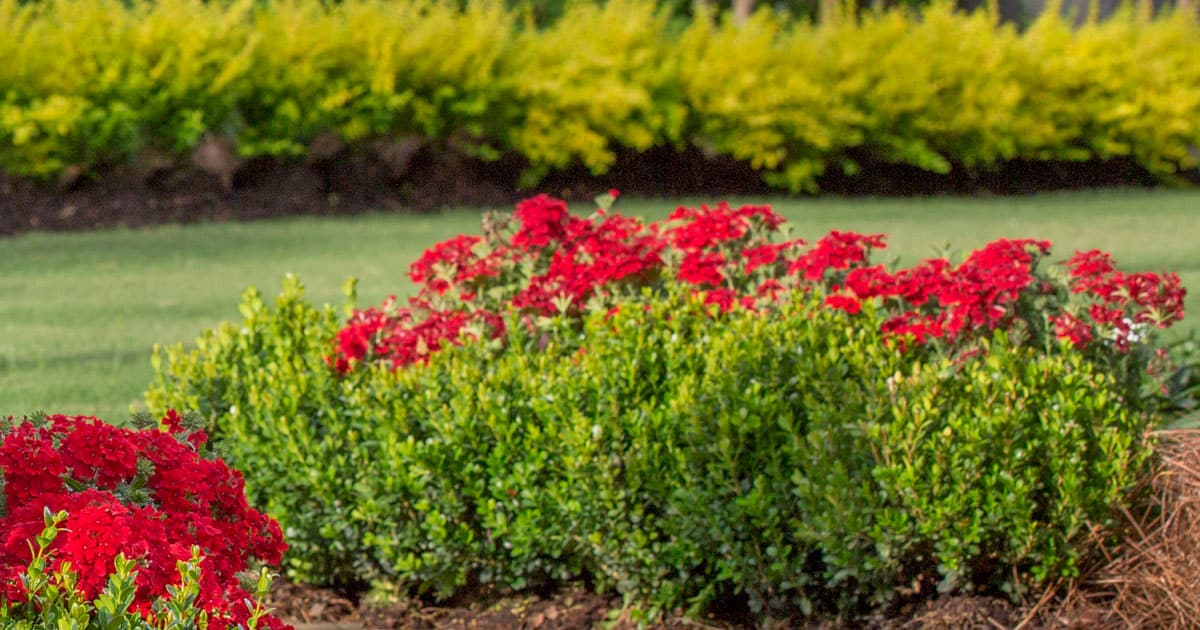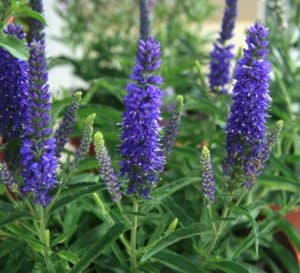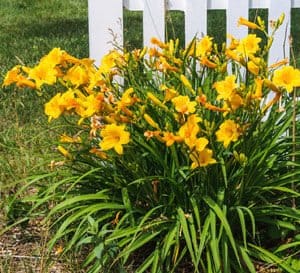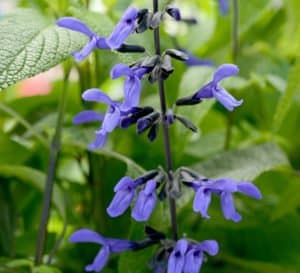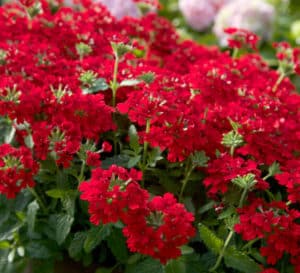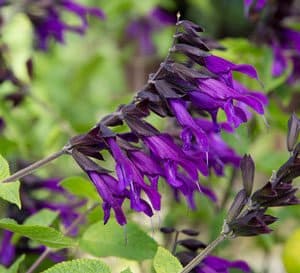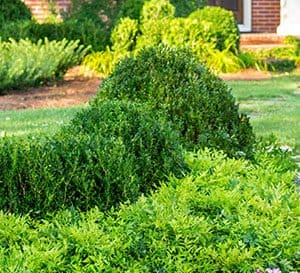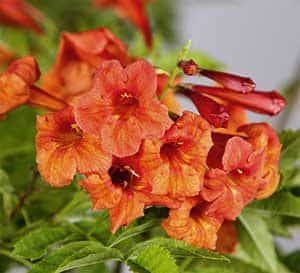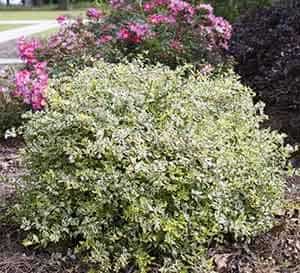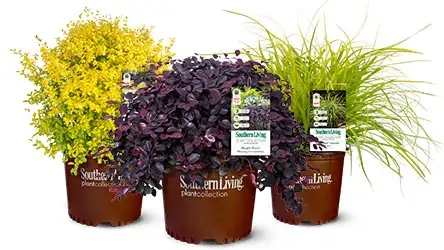Remember the color wheel your third grade art teacher used to teach you how to mix paints? It also happens to be an excellent tool for the garden! The arrangement of colors on the wheel demonstrates how to combine colors in the landscape for maximum impact. Interestingly, the colors that fall opposite one another on the wheel (complementary colors) are most vibrant when paired together.
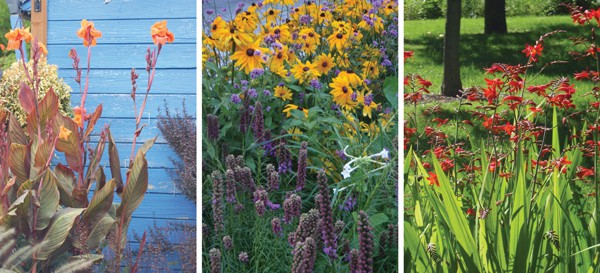
Through a trick of the eye, complementary colors look better together than by themselves. Red is never as vivid as when it is set against green, or orange against blue. Simply put, complementary colors provide the greatest amount of contrast. In the garden, complementary colors may be used to add visual impact, as well as complexity. You may notice that each pairing includes a warm and cool color. Cool colors recede to the background, while warm colors jump forward creating the illusion of depth.
Following are suggested complementary color combinations featuring specimens from the Southern Living® Plant Collection to get you started.
Remember to look for color not only in flowers, but also in foliage, bark, and fruit. You may also discover complements through containers, painted backdrops and other hardscape elements.
Blue and Orange
Perhaps the most lively complementary color pairing, blue and orange add a touch of excitement to the garden. Add height with Bells of Fire™ Tecoma and Nectar Blue™ Salvia. Then step down toward the ground with Dark Moody Blues™ Veronica.
Yellow and Purple
This color combination is found abundantly in nature whether in spring bulbs or autumn blooms. In the garden, try pairing colorful foliage from Miss Lemon™ Abelia and Little Black Magic™ Dwarf Elephant Ear with the vibrant blooms of ‘Amistad’ Salvia and Evergreen Stella™ Daylily.
Red and Green
For a dramatic look, nothing is as elegant as red and green in the garden. Evergreen shrubs such as Baby Gem Boxwood provide lasting backdrops to showy blooms. Incorporate large flowers like Gerbera Drakensberg™ ‘Flame’ with petite blooms such as Ragin’ Cajun™ Ruellia for textural interest. Try Majesty™ Shrub Rose for a dynamic focal point.

